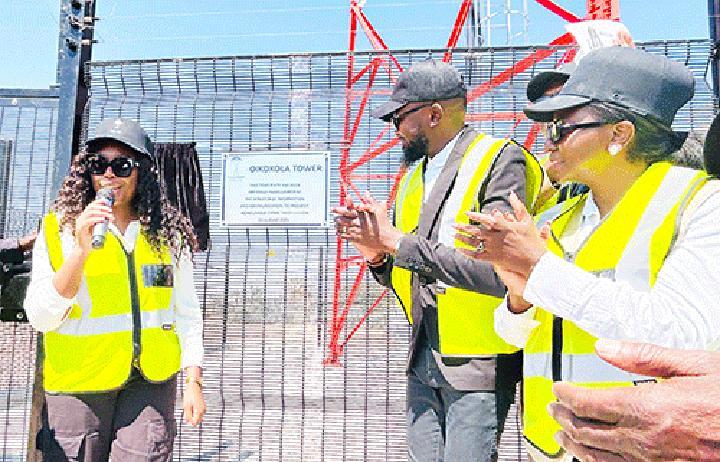Africa-Press – Namibia. A total of 25 network towers were recently inaugurated across the country to ensure connectivity for residents struggling with network issues, especially in rural areas.
Minister of Information and Communication and Technology (ICT) Emma Theofelus revealed this on Wednesday at Oikokola village in the Omusati region during the official inauguration of a network tower.
She said each tower cost about N$1.6 million.
The minister said four network towers were set up in Erongo region, seven in Khomas region, two in Otjozondjupa, two in Kavango East, two in Kavango West, one in //Kharas, one in Oshikoto, one in Oshana, three in Zambezi and two in Omusati.
“Unfortunately, we cannot be in all other regions today. The Oikokola network tower was chosen to be a symbolic inaugural tower, as alluded to by the CEO,” stated Theofelus. She said that this is a milestone in the journey toward the inclusive and resilient future envisioned in Vision 2030 and the given practical direction in the National Development Plan 6 (NDP6).
“The NDP6 places innovation, youth empowerment, digital transformation and inclusive growth at the centre of Namibia’s next chapter. Through this plan, we are building a knowledge-based economy, one where access to technology is not a privilege but a right,” she stated.
Theofelus highlighted some of the commitments that are working towards the NDP6 and through the National Digital Strategy. “We aim to expand internet access from just over 50% today to 90% of our population by 2030. Access to digital technologies, currently around 28%, is expected to grow to 70% within the same period,” she said.
She added that the ICT sector’s contribution to the gross domestic product, which today stands at 1.6%, will be strengthened to over 4%.
“By 2029/30, we aim to digitise 100% of government services, supported by a national digital ID system, secure data centres and interoperable digital platforms,” the minister noted. She said that, through the National Emergency Telecommunications Plan, they are ensuring that rural and underserved areas are not left behind because true resilience means equal access – even in times of crisis.
“To the youth, let this be your gateway to the world. Use it to innovate, learn, create and connect,” she urged. The minister stressed that the future of Namibia rests in the ability of the youth to take these tools and transform them into opportunities. She urged the residents to protect these towers and guard them against vandalism and theft. “Treat them as the community’s assets, for that is what they are. This project is a direct contribution to Namibia’s national goals. I want to salute PowerCom, its leadership and its partners for their investment and commitment,” Theofelus remarked.
She said the towers prove that when government and the private sector work hand in hand, the dreams of Vision 2030 and NDP6 move from paper to reality.
“Let us remember that development is not the work of government alone, nor of one company. It is the shared responsibility of all of us, the leaders, communities, businesses and young people alike. Together, we can create a Namibia that is inclusive, competitive and globally connected,” she added.
Also speaking at the occasion, the CEO of PowerCom Beatus Amadhila, said these towers at Oikokola and 24 other sites are more than steel and technology. He said these network towers are a promise to the people of Etayi, Omusati, Zambezi, Okavango West, Kavango East, Erongo, //Kharas region and people in the rest of the 14 regions and 121 constituencies in Namibia. Amadhila said the urban areas thrive with strong signals, but in too many rural villages, connectivity is still unreliable.
“These gaps between cities and countryside or rural and urban areas deny our underserved communities equal opportunity to connectivity, resulting in exclusion of these communities from participating fully in the modern digital social and economic sphere. This is what we call the digital divide,” he added.
Amadhila said this divide means some learners can attend virtual lessons while others cannot. “Some farmers can check market prices, while others must travel long distances for information. Some clinics can access telemedicine, while others struggle to place a call,” he remarked.
Residents who spoke to New Era expressed their joy at receiving network towers.
They said they will no longer suffer from poor network connectivity.
“This is good news for us. Our government is doing well to ensure we are not left behind. Now, we can also be on social media and make calls,” said Maria Hangula from Oikokola village.
For More News And Analysis About Namibia Follow Africa-Press






